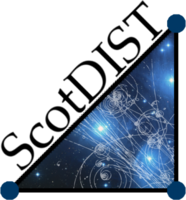The main focus of my research work - search for the doubly charmed baryon Xicc+ in two different decay channels using data recorded by the LHCb experiment, will be discussed.
Nuclear physics, through computational models, provides the opportunity to constrain astronomy. Little is known about the oldest stars, but through observations of there successors and nucleosynthetic models, we can begin to predict the conditions they produced and their properties.
I will discuss my first industry placement which took place over the summer at the Heineken UK HQ in Edinburgh. A brief insight will be given into working in industry. (It's not all about Beer!)
I will discuss my time with Craft Prospect giving details on some of the work completed and my personal experience from the placement.
In addition to more classic parameter estimation techniques, MCMC techniques can be implemented to compliment these methods as a further analysis tool. These tools become especially useful when the dimensionality of parameter spaces become high, as is the case with the three pion production channel that will be a focus of this analysis.
Gravitational wave detection is now commonplace and as the sensitivity of the global network of GW detectors improves, we will observe O(100)s of transient GW events per year. The current methods used to estimate their source parameters employ optimally sensitive but computationally costly Bayesian inference approaches where typical analyses have taken between 6 hours and 5 days. Here we show...
One of the most striking features of turbulent fluid flows is their seemingly random and unpredictable nature. However, since such fluids are described by the Navier-Stokes equations, which are entirely deterministic in nature, their motion cannot be truly random. In reality, turbulent flows exhibit what is commonly referred to as deterministic chaos. The time evolution of such systems is...

